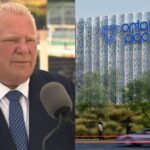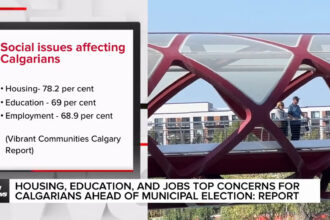In a striking political development that has sent ripples through Alberta’s political landscape, the provincial New Democratic Party secured victories in two of three crucial by-elections held Tuesday. These results mark a significant shift in voter sentiment across traditionally conservative-leaning constituencies and potentially signal changing political dynamics in Canada’s energy heartland.
The NDP candidates triumphed in Calgary-Lougheed and Camrose, while the United Conservative Party managed to hold onto Brooks-Medicine Hat, though by a notably slimmer margin than in previous contests. Political analysts are describing these results as a potential warning sign for Premier Danielle Smith’s government, which has faced mounting criticism over healthcare management and economic policies.
“These by-election results reflect growing voter concerns about the direction of the province,” noted Dr. Melanie Richardson, political science professor at the University of Alberta. “When constituencies that have historically voted conservative shift to the NDP, it suggests deeper dissatisfaction with current governance approaches.”
In Calgary-Lougheed, NDP candidate Gurinder Brar secured the seat with 52% of the vote, overcoming UCP challenger Tanya Fir in a riding previously represented by former Premier Jason Kenney. This particular victory carries symbolic weight given its status as a former conservative stronghold and signals potential vulnerability for the UCP in urban centers.
The contest in Camrose proved equally significant, with the NDP’s Rhiannon Hoyle capturing 48% of votes against UCP’s Dawn Fargey. The rural riding had previously leaned conservative, making this flip particularly noteworthy for political analysts who monitor Alberta’s evolving electoral dynamics.
Meanwhile, the UCP’s Heather Mack retained Brooks-Medicine Hat with approximately 46% support, though this represents a considerable drop from the party’s previous performance in the region. The narrowing margins suggest potential erosion of the UCP’s rural base, historically considered their electoral bedrock.
These results come at a pivotal moment in Alberta politics, with recent polling indicating growing public dissatisfaction with Premier Smith’s handling of healthcare services, education funding, and economic diversification efforts. The province has experienced significant political volatility since 2019, with leadership changes and policy reversals contributing to voter uncertainty.
Economic factors played heavily in these by-elections, with many voters expressing concerns about Alberta’s future beyond oil and gas dependency. The NDP campaign focused extensively on healthcare investments, diversification strategies, and stabilizing public services – messages that evidently resonated with voters in previously UCP-friendly areas.
“The electoral shifts we’re seeing reflect broader tensions in Canadian politics between resource development and climate concerns, centralization versus regional autonomy, and traditional versus progressive values,” explained political strategist Jonathan Haywood. “Alberta is increasingly becoming a microcosm of these national debates.”
Both parties have already begun positioning these results as momentum builders heading toward the next general election, with NDP leader Rachel Notley describing the victories as “a clear message that Albertans want change,” while Premier Smith characterized the UCP win as evidence that “Albertans still trust our economic vision.”
As the province processes these outcomes, the political implications extend beyond Alberta’s borders. Energy policy decisions made in Edmonton have significant ramifications for national economic strategies and climate commitments, making these local electoral shifts potentially consequential for federal-provincial relations.
What remains to be seen is whether these by-election results represent a temporary expression of mid-term dissatisfaction or a more fundamental realignment of Alberta’s political landscape. As voters across the province absorb these outcomes, the critical question emerges: Is Alberta experiencing a momentary political fluctuation, or are we witnessing the early stages of a more profound transformation in Canada’s most politically distinctive province?











